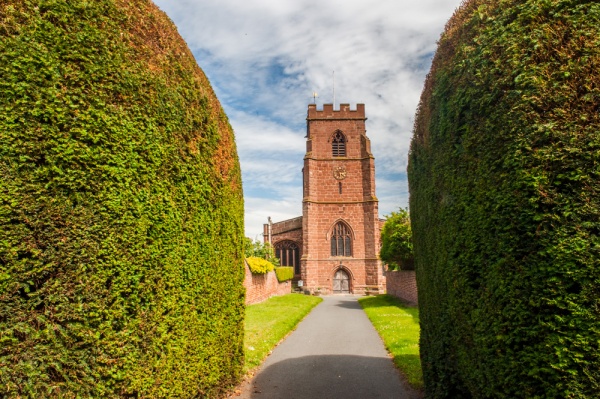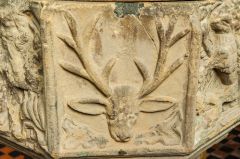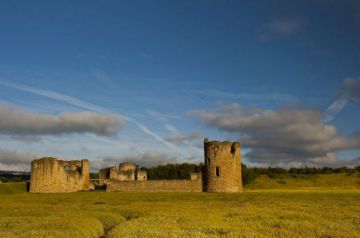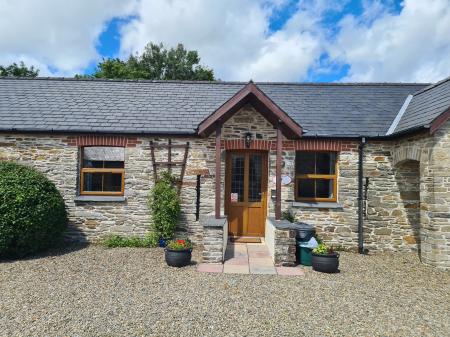

arms on the font
One historic feature of St Chad's that is easy to miss is the north door, tucked around the outside of the building. Here you will see three plugged holes, used as loopholes by Civil War troopers when the church was used by Royalist troops. The loopholes were needed, for the church was the scene of fierce fighting, which spilled into the nave itself.
At various points around the interior, you can see the marks made by musket balls. The clearest marks are in the west wall of the church, near the font. The font is late medieval and is composed of eight sides, each bearing a heraldic shield, most of which depict arms of the Lords of Bromfield and Yale.
Included are wonderful animal carvings including a stag's head and a lion. The underside of the font bowl is decorated with fascinating carved heads, the sort you would normally see on gargoyles.
Just inside the west door is a carving of a mitred head, a fragment of a medieval bench end. This head is thought to represent St Chad, the first Bishop of Lichfield. In 1872 the head was removed from the church during restoration work and ended up at Holt Hall, where it served as a newel post. When the Hall was torn down in the 1940s the head was returned to the church.
Towards the east end of the south aisle is a grave slab carved with a skull and crossed bones. No, not a pirate symbol, but a 'Memento Mori', a common symbol of mortality often used in the 17th century when the threat of plague was ever-present.

Nearby, on the south wall, is a series of medieval consecration crosses carved into the stonework. Beside the crosses is a lovely 13th-century credence table, where the Eucharist was placed during a service. This wonderful canopied 'table' might at first be mistaken for a piscina, but the surface is flat, like a table, not cupped like a bowl.
The table section is flanked by carvings of a leopard and man's head, while the table itself is supported on a marvellous carved head of a grotesque figure.
Opposite the credence table is the 'Leaning Column', a pillar supporting the roof. Over time the pillar has been forced out of vertical alignment to a striking degree.
Across the sanctuary in the Crue Chapel is a small brass tablet set upon the wall. This is a memorial to Thomas Crue (d. 1666) and was crafted by Sylvanus Crue, his relative, who was a goldsmith in Wrexham.
St Chad's is a wonderful historic church, and I really must applaud the job they've done with informational signage, which makes it easy to gain an appreciation of the building and its sometimes turbulent history.
Holt has several other historic features worth seeing; a short stroll downhill from the church brings you to the medieval bridge across the Dee, site of a battle during the Civil War. And an equally short stroll in the other direction brings you to the partial remains of medieval Holt Castle, built to guard the first river crossing here. Don't forget to visit Farndon church across the river, which has a famous stained glass window depicting Civil War soldiers.
St Chad's is part of the Open Church Network, a group of historic churches in Wrexham district which aim to encourage tourism and enjoyment of these historic buildings by the public. In layman's terms that means it is generally open daylight hours and has plenty of useful information signs to tell you about the building and its history.







 We've 'tagged' this attraction information to help you find related historic attractions and learn more about major time periods mentioned.
We've 'tagged' this attraction information to help you find related historic attractions and learn more about major time periods mentioned.




